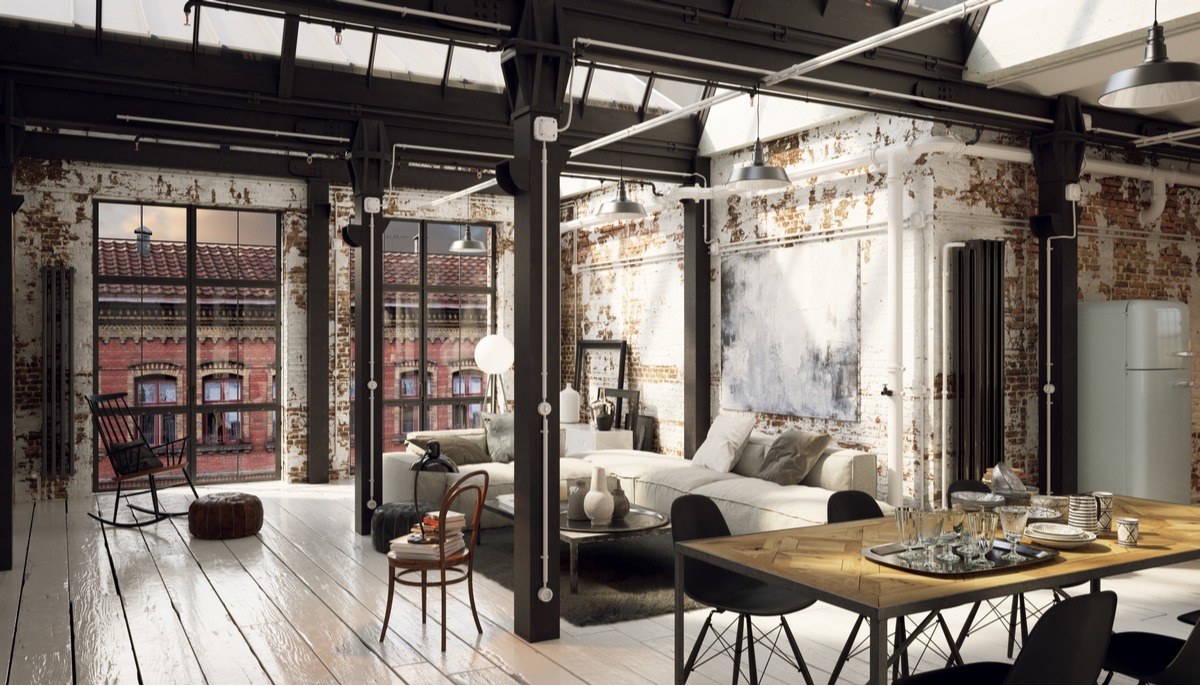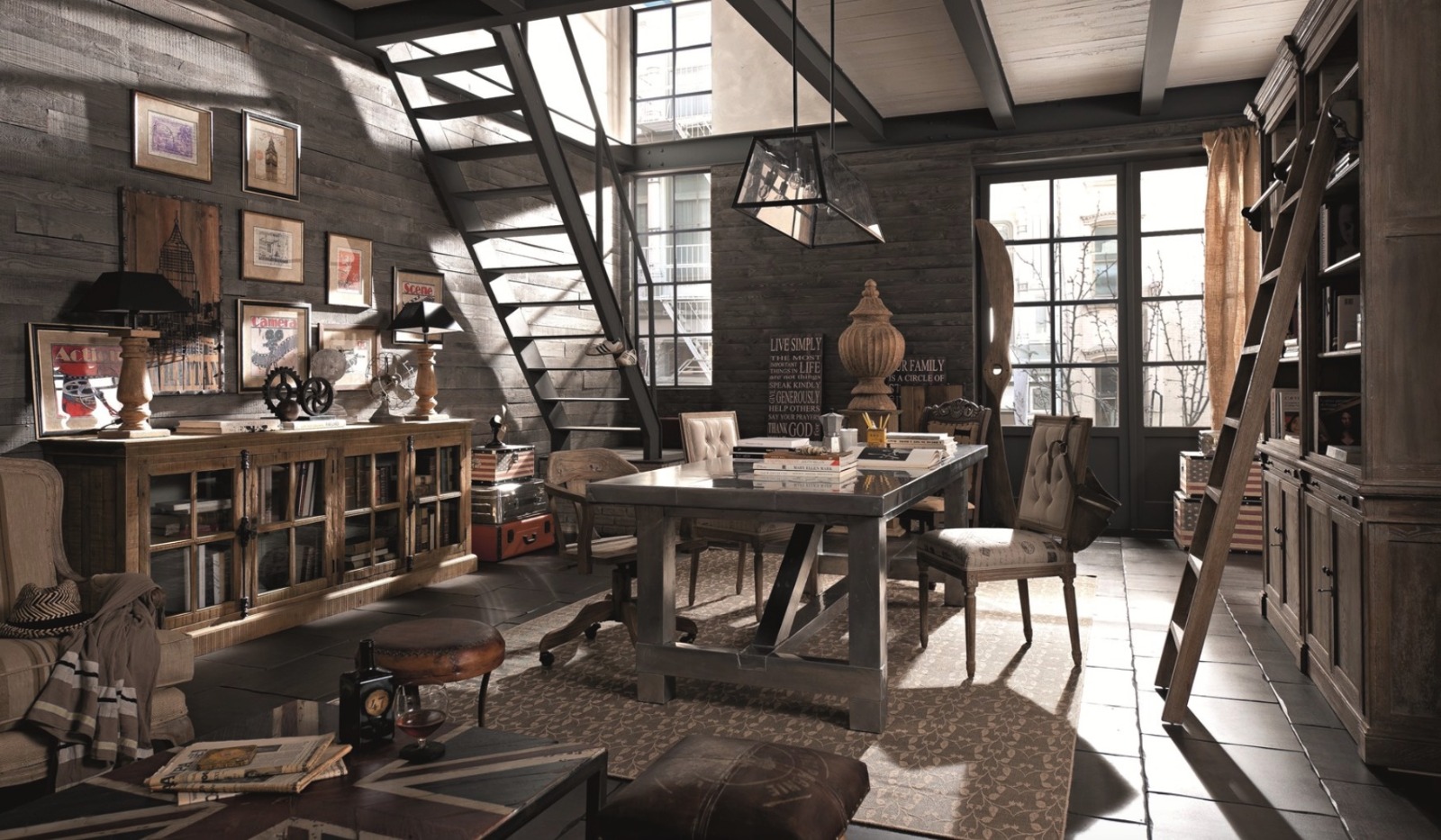In ancient times, places also had a soul of their own.
Everything that happened in a place was ‘etched’ in his memory, giving it a kind of particular and unique energy.
For this reason, among the ancient Romans, there was the cult of the “genius loci”, a spirit of the places that gives the idea of how, in a society far from modern materialism, even geography was a ‘living thing’ and, in some cases, sacred.
This concept, inherited from the past, has also been partially recovered in architecture, where the design of a space or a building follows the study of the environment and its identity: in this way, what will emerge again will be according to the “spirit” of that place and it will fit the context perfectly.

INDUSTRIAL STYLE: BETWEEN VINTAGE AND MODERN
The industrial style, therefore, is born from the same desire not to forget the past of a place, respect it and live with it.
Although we do not speak explicitly of spirituality and holy places, this style reveals a vision for which places, in a sense, also have a soul.
Thus, with an approach entirely based on recovery and retraining, perhaps even a bit ‘radical chic’, in 1950s New York, the industrial style was born spontaneously.
Warehouses, warehouses, laboratories, workshops, factories and abandoned warehouses found a new life being transformed into homes.
The same trend would later be expressed also in the commercial and cultural sphere, with the recovery of entire abandoned areas (an example is Tortona Street in Milan, where Design Week and Fashion Week now take place).
If the authentic industrial style was based, therefore, on the recovery of abandoned spaces, it is clear that today we very often find this style in the form of imitation, with the readaptation of spaces clearly different from the classic ‘lofts’ where originally lived artists, writers and architects.
On the other hand, the birth of the industrial style is also interesting from the point of view of industrial and historical archeology, as it narrates the development of production and, especially in recent years, also reveals a massive phenomenon of deindustrialization.

THE ELEMENTS OF THE INDUSTRIAL STYLE: GRAY AND EXPOSED MATERIALS
Now that we have contextualized the industrial style, it is time to explain its characteristics and, of course, it is already superfluous to underline that the space itself contributes greatly to the result and originality of the project.
That is why the architect Antonio di Maro explains in the first place that what is characteristic of this style are the large spaces without internal divisions, with a “visible bearing structure […] formed by reinforced concrete pillars, or, more frequently, by small columns in cast iron“. Exposed are also wooden or steel beams, pipes, systems, bricks and then, inside, is very common the use of mezzanines and iron stairs, to acces study and night areas or offices.
The floors are generally made of “industrial resin or polished concrete“, while “aluminum frames usually have a quadrangular scan with staggered fixed and openable parts”.
These are elements that risk of “cooling” the environment, that’s why they’re usually balanced by the use of wood, copper and decoration elements in warmer colors.
So, typical of the industrial style are rough surfaces, exposure of materials (resistant and robust), screws, welds, scratches, rust, raw wood, in a combination of vintage and modern at the same time.
For the living room are widely used vintage style leather sofas, stoves and cast iron furniture such as old clocks and machinery, reclaimed furniture and shelves, perhaps in anthracite black, jute rugs.
In any case, gray is usually the predominant color, combined with beige, white and black.
Bright colors are generally avoided.
That is why the contribution of natural light through large windows becomes essential to lighten the environment, along with lamps and spotlights (with exposed cables).
In short, as Casa Moderna points out, obviously this is not a style that goes well with “family photos framed in silver, antique paintings, classic walnut-colored furniture and Louis XVI sideboards, much less suits those who cannot do without the asepticity of a nice stainless steel worktop, the order of a nice ‘minimalist’ kitchen or the sober design of a nice chrome trim “.

